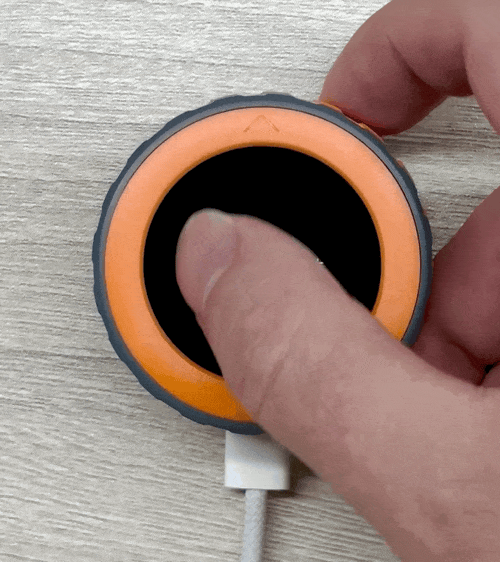
Arduino入門
2. デバイス&サンプル
3. M5Unified
4. M5GFX
5. 拡張モジュール&サンプル
Unit
Base
Cap
IoT
アクセサリー
Dial Touch
Dial Touch タッチスクリーンに関連する API とサンプルプログラム。
サンプルプログラム
ビルド要件
- M5Stack ボードマネージャーバージョン >= 3.2.2
- ボードオプション = M5Dial
- M5Dial ライブラリバージョン >= 1.0.3
cpp
1 2 3 4 5 6 7 8 9 10 11 12 13 14 15 16 17 18 19 20 21 22 23 24
#include <M5Dial.h>
m5::touch_detail_t touchDetail;
void setup() {
auto cfg = M5.config();
M5Dial.begin(cfg, false, false); // encoder, RFID
M5Dial.Display.setTextColor(GREEN);
M5Dial.Display.setTextDatum(middle_center);
M5Dial.Display.setTextFont(&fonts::FreeMono12pt7b);
M5Dial.Display.setTextSize(1);
M5Dial.Display.drawString("Touch Test", M5Dial.Display.width() / 2, M5Dial.Display.height() / 2);
}
void loop() {
M5Dial.update();
touchDetail = M5Dial.Touch.getDetail();
if (touchDetail.isPressed()) {
M5.Display.fillCircle(touchDetail.x, touchDetail.y, 2, SKYBLUE);
}
}動作例:

API
M5Dial ライブラリは M5Unified ライブラリを基盤としており、タッチスクリーン部分は M5Unified 内の Touch_Class を利用しています。詳細な API は以下のドキュメントを参照してください: